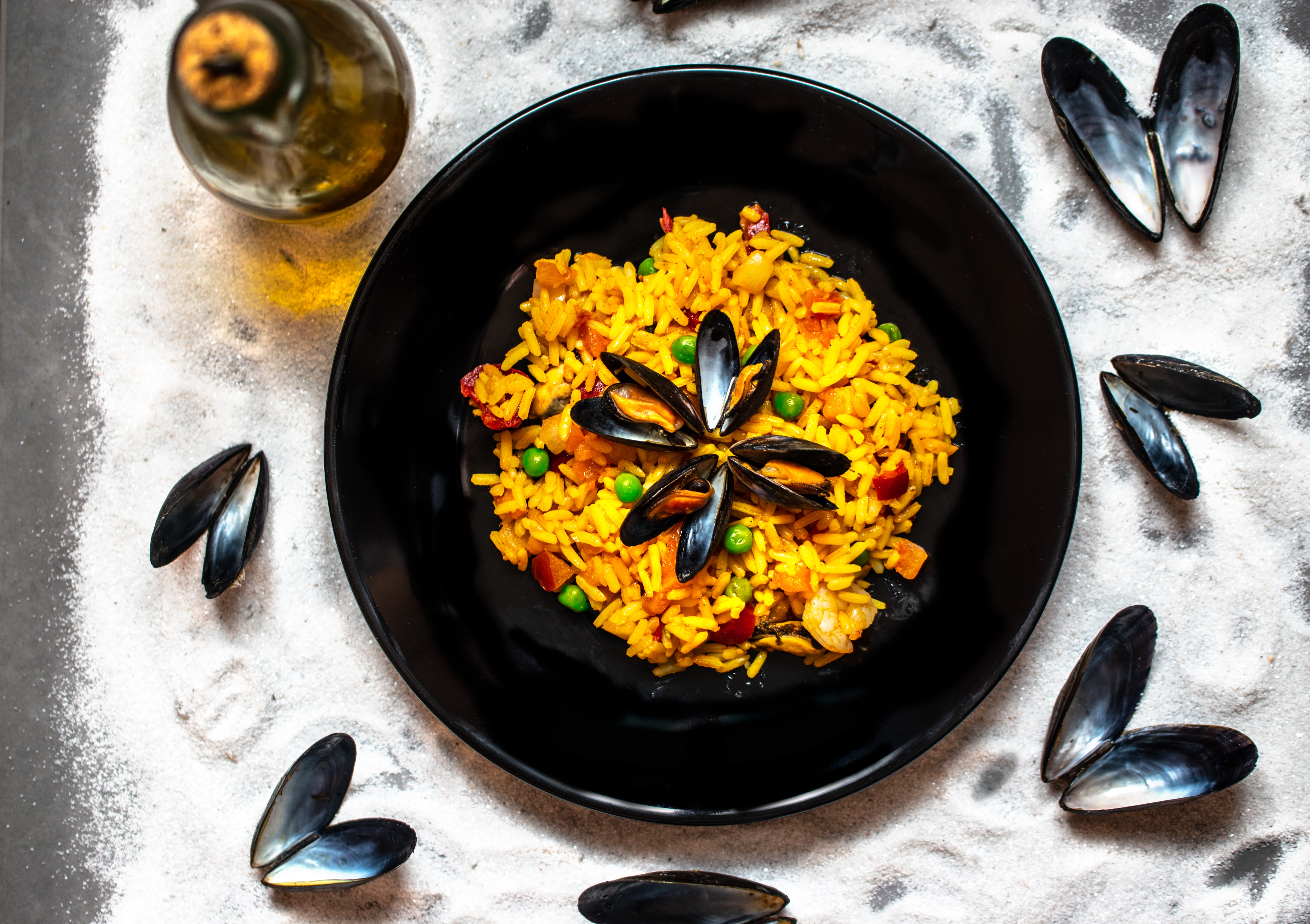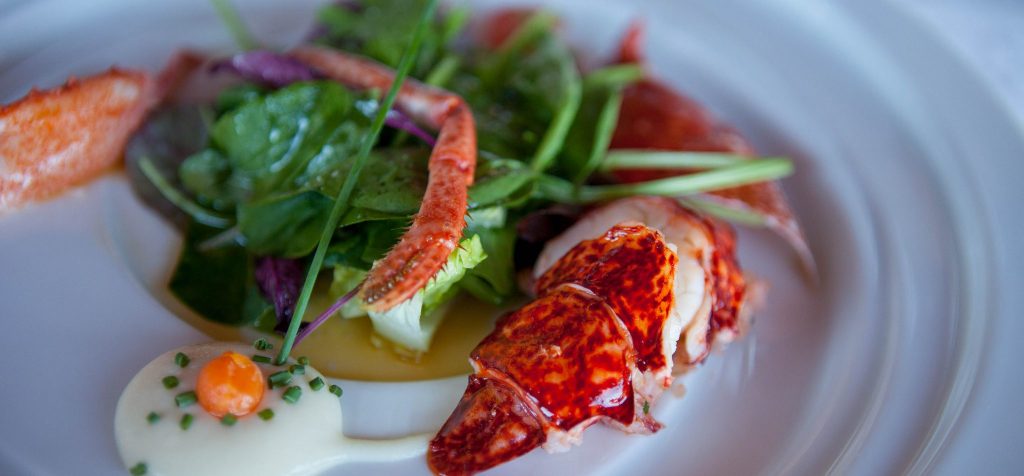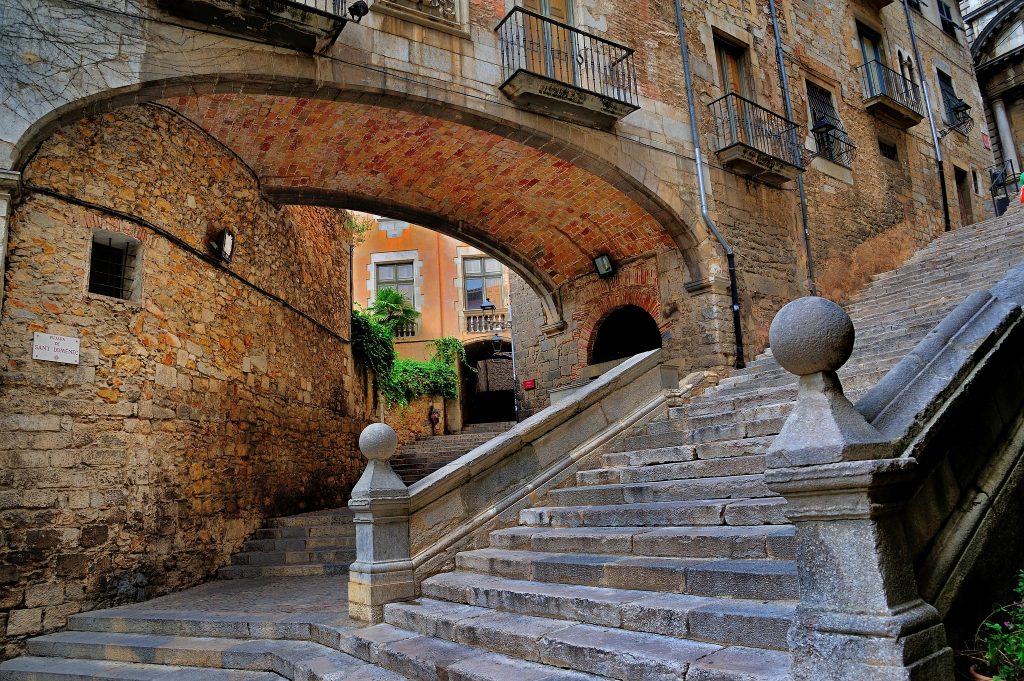The Essential Travelers Guide to Ordering Fish in Spain

Standing in a Spanish pescadería can be intimidating, even to the most acclimated gringo. Unlike in the U.S., where the fish counters are neat and organized, filets in even rows, a Spanish fish market is not for the squeamish. Whole fish are displayed on ice, heads and tails intact. Large shiny eyes stare up at you, mouths gape wide to reveal rows of razor-sharp teeth. To conquer a Spanish fish market is, to some, a test of one’s knowledge and stomach.
That said, one of the best things about markets–or any shop for that matter–in Spain is the individualized attention that each customer is given. It is no different in the pescatería. There is a process to ordering fish from a fishmonger. It is often long and requires some patience while the pescatera cuts each customer’s fish to order with a long, machete-like blade. She will give you the whole fish if you want it, after scaling it. She slices off the head, slices down its belly, and removes all the parts you may or may not choose to keep. It is left whole or sliced into filets per your preference. She’ll even suggest some easy dishes to use it in. If you plan to make a caldo–a fish stock–she’ll throw in the head, bones, and tails too. The moral of the story is that it takes time because it’s a labor of love.
If you’re a visitor to Spain, you probably won’t be spending much time at the pescaterías unless you’ve rented an apartment or Airbnb or casa rural. The Boqueria, the central market in Barcelona, is an excellent place to capture the local fish on film if you’re so inclined. However, if you are the kind of person that likes to transport their magical travel experiences home with them, then perhaps it’s worth stopping at the local market to find out some tips for making your favorite traditional Spanish dishes back home. The fishmongers might seem short of humor, but don’t be put off by their brusque attitude. It’s not your Spanish. It’s merely the Spanish way. Some of the easiest recipes to recreate at home are the ones that perhaps seem most challenging, such as fish stock.
Even if you don’t brave the markets, knowing how to order fish in the restaurants is essential, since it would be simply irresponsible to leave Spain without trying one of the many delicious seafood dishes on the menus. The Spanish eat a wealth of Mediterranean fish, from shellfish to octopus to a simple cut of salmon, and there is nary a local menu that will not feature at least several commonly eaten fish dishes. The first time I ever tried octopus was in Spain, and I was surprised at how tender and tasty it was. Eating it gallego style, as is common throughout Spain, is certainly the way to go. It’s thinly sliced, drizzled in olive oil, and sprinkled with a fine dusting of sweet pimenton (paprika). I once had a version served at Ten’s, the restaurant at the Park Hotel in Barcelona that came served under a cloche, which when lifted released a fine haze of beech wood smoke that impregnated the stewed pulpo and the creamy olive oil mashed potatoes served alongside it. That was a dish I will never forget.
Below is a list of dishes I highly recommend you try while you’re here, and a list of fish that you might encounter on the menus. Hopefully, armed with a good list, you’ll have an equally revelatory experience.

FISH DISHES TO ORDER
Arroz Caldoso: Similar to a stew, this Valencian dish is usually made from lobster (de bogavante) or a mixture of seafood (de marisco). It often features rice from the Delta de l’Ebre region of Catalunya between Barcelona and Valencia. Wines to pair: Roses from Alicante or a white Moscatel from Valencia.
Arroz Cremoso: More like a risotto this rice dish is made from arroz de bomba, a variety of rice similar to risotto that comes from the famous rice-growing region in the Delta de l’Ebre national park. It is a variety of rice that pulls in moisture from the fish-based broth it is cooked with and creates a thick and creamy dish. Most often arroz cremoso is served with seafood, often shrimp or lobster. Wines to pair: You’ll need something richer with a touch more acidity to hold up to the creamy, bold flavors.
Arroz Negro: If you want to have a paella during your visit, this is the one to try. So named for its black color, which also imparts the dish with the subtle flavor of squid ink. Wines to pair: Cava is a fabulous choice for this dish to add some freshness or even a lighter red.

Bacalao al Pil-Pil: One of the dishes that define the Basque country is al pil-pil, a dish so named for how it’s made rather what it’s made of. The dish is made slowly, by shaking the ingredients together in the pan until they coalesce into the perfect salsa. There’s really nothing to it–salt cod, olive oil, garlic and a touch of guindilla pepper, but its few ingredients create a flavor that is creamy and rich and downright heavenly. Wines to pair: Either a red or white Txakoli is a natural mash-up. Not only are you sourcing from the same region, but you’re pairing a light refreshing dish with a wine that screams for summer!
Boquerones en Escabeche: Escabeche refers to the vinegar-based sauce used as a method of conservation made from oil, vinegar, wine, bay leaf and peppercorns. This is the sauce most often served with boquerones. Wines to pair: Vermouth may not be on your radar, but it should! It calms the vinegar and brings out the flavor of the boquerones.
Buñeulos de Bacalao: These are deep-fried salt cod fritters that are similar in texture and look to hush puppies, but are more savory in flavor. Wines to pair: Being deep-fried, you need something with acidity and oomph, such as an Alvear Fino em Rama.
Caldereta de Langosta: This soup hails from the Balearics Island–Minorca to be exact–and is one of their most famous dishes. Similar to lobster bisque, it’s made with brandy in place of the traditional sherry and includes a few extra vegetables than the American version, but the highlight remains the same: tender, meaty pieces of lobster that soak up the fragrant broth. It’s incredibly expensive on the island–upwards of 30 euros a bowl!–and easy to make, so it’s a good dish to try when you get back home. If you’re on the islands, drink local Balearic wines!
Chipirones: small squid, usually prepared on the grill (a la plancha) or fried (frito). Wines to pair: Either a Brut Nature Cava or maybe a crisp and full-bodied Albariño.
Croquetas de Bacalao: Some may argue that croquetas, with their crispy warm outside and creamy rich insides, are the perfect Spanish bite. They are commonly ordered by the individual unit as part of a tapas meal, and while you can get them in a variety of flavors from jamon to mushroom, the most common are those made of bacalao, the salt cod that is found everywhere in Spain. Wines to pair: Easy, go big, go with a red wine from Rioja.

Mojama: This is a specially cured tuna usually served alone and accompanied by marcona almonds. Wines to pair: There’s only one solution for this, Sherry wine! Instead of a Fino, why not try a Manzanilla.
Pulpo a la Gallega/a la Feira: Thin slices of octopus are stewed until tender and then sometimes charred until their edges are crisp. Drizzled in olive oil and sprinkled with Pimentón de la Vera (a Spanish-style paprika), this dish is made of three simple ingredients that simply sing. Wines to Pair: Find a fresh, minerally blend from Rias Baixas.
Suquet de Peix: This is a classic Catalan dish made of little more than fresh seafood and potatoes whose name derives from the Catalan word “suquejar” meaning “to release juice.” Its base is a classic Catalan sofregit, or fried onions and tomatoes, and is enhanced with fresh parsley, garlic and almonds. Wines to pair: Being that this is a seafood dish, you want something with a little more body to hold up. Look for wines from the North of Spain such as a Garnatxa or Rose.
Zarzuela (or Operetta) de Mariscos: This is a dish for seafood lovers very similar to a suquet but without potatoes. It is simply a mix of shellfish and fish cooked slowly to release the juices and then thickened slightly with bread crumbs. Its broth is rich and savory and enhanced with a touch of brandy. Similar to the Suquet de Peix pairings, you’re needing something with girth. So veer slightly west and grab a Verdejo.

FISH TO KNOW
- Almejas – clams
- Anchoas – salted anchovies, like those you normally find at home
- Angulas – baby eels
- Atun – tuna
- Bacalao – salt cod
- Berberechos – cockles
- Bogavante/cigalas – lobster
- Boquerones – whole, filleted anchovies
- Caballa – mackerel
- Camarón – shrimp
- Cangrejo/buey de mar – crab
- Escarmarlanes – a bit like a crawfish, but with no direct English equivalent
- Langostinos/gambas – shrimp
- Mejillones – mussels
- Merluza – hake
- Navajas – razor clams
- Ostras – oysters
- Pulpo – octopus
- Rape – monkfish
- Salmon – salmon
- Sardinas – sardines
- Trucha – trout
- Zamburiñas – scallops

LANGUAGE TO USE
Here in Spain, we speak very directly, especially at the restaurant. We always use quiero (I want) over quisiera (I would like), so don’t feel rude doing the same. You will very occasionally see menus distinguish between white-fleshed fish and blue fish, such as sardines or mackerel. This is not a literal designation and doesn’t refer to color or to health benefits. It generally just refers to oily fish, high in omegas 3s, which are considered to be more healthy because of the good fats they contain. In restaurants, fish are often cooked whole and are not fileted or deboned before serving. If you want to have this done, you would need to ask for it.
- Quiero probar el bacalao – I want to try the bacalao.
- Prefiero un pescado blanco – I prefer a white fish.
- El tipo de pescado que prefiero son las pescados azules – My favorite type of fish are blue fish.
- Si sería posible filetearlo, lo prefería. – If it’s possible to filet it for me, I would prefer it.
As for the market, our language is slightly different. Typically, they will ask what type of fish you want, how much (by weight) and whether or not you want it cleaned and prepared. Since I am never sure of how much I need by weight, I always ask for enough to serve the number of people I’m feeding and then choose by sight. However, an 8-ounce portion is about 230 grams, and most will order a filet somewhere between 170-300 grams per person. The fishmonger might also ask if you are going to make a broth (caldo) because in that case, they will reserve the heads and spines for you as they filet it. We don’t normally ask what’s fresh that day, because it’s assumed that everything is fresh, although almost always most fish, even in the local mercados, have been previously frozen to ensure its safety. If you choose to tackle a fish broth, the choicest fish for a caldo tend to be mild white varieties, such as rape (pronounced rah-pay), as monkfish is known in Spanish or merluza, or hake, which are fairly easy to find back home.
- Necesito un trozo suficiente para dos personas – I need a piece big enough for two people.
- Si, esto es suficiente – Si, that’s big enough.
- Por favor, limpiarlo y hacerlo en filetes – Please clean it and and filet it.
- No voy a hacer un caldo. No necesito las espinas ni la cabeza – I’m not going to make a stock. I don’t need the spines or the head.
- Qué pescado recomienda para hacer una sopa? – What fish do you recommend for making a soup?
- Solo necesito 100 gramos – I only need 100 grams
Book an Unforgettable Food Tour in Spain
If you have any additional suggestions on Spanish fish, don’t hesitate to share! You can also check out our Portuguese fish suggestions while you’re at it. Who knows, maybe your vacation will take you on a grand Iberian adventure. If you’re keen to have an epic fish culinary experience in Spain, why not dive into our Barcelona Food Tours, Andalucia Food Tours, or simply contact us to design a custom tour just for you!






